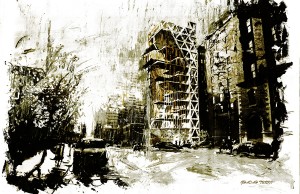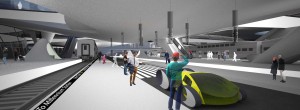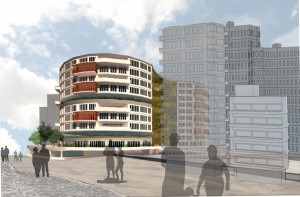Marie Gyllstrom is a community-conscious designer interested in how space can ignite change. She has lived in five states, most recently in Ohio where she got a Bachelor of Science in Architecture at the University of Cincinnati and worked for two years post-graduation. Relocating frequently as a child afforded her the experience of being educated in many different types of schools and environments, which sparked her interest in school design. She has also worked part-time for Whitney Architects doing corporate interior architecture for the past two years while studying at SAIC. The study of how people work today inspired her to rethink the way children and adolescents learn to prepare them for the ever-changing ways of working.
Connecting Education & Environments with Place-Based Design
“Using a place-based approach to investigate how designing learning environments at the scales of the community, site, building and classroom can support a Preschool-12th grade Montessori school’s mission of promoting the holistic growth of children.”
A place-based school design is one that is specific to the school’s pedagogy, place and culture. Before students can learn to be competitive, global citizens, they must learn to be thoughtful local citizens and stewards to their own environments. Battle Creek Montessori Academy in Springfield, Michigan is a suburban site that currently houses preschool through eighth grades in an existing field house facility. The Montessori method places a great emphasis on experiential learning from infancy through adulthood. By incorporating the full adolescent program with grades 8-12, the pedagogy is complete and the school design can be a holistic representation of child development. The form of the building reflects the simultaneous introversion required to foster the sense of community and home-like environment of a Montessori school, while promoting the extroversion of extending learning beyond the classroom. The formal learning spaces blend seamlessly into informal learning spaces in both the outdoor classroom and the interior learning street. Continuous pathways connect all these learning opportunities to create a path of discovery where the child’s development can naturally unfold.











